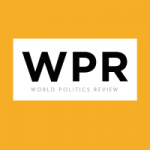Erica Gaston

By any definition, Libya is a so-called fragile state and a high-priority challenge for international security. Since 2011, it has been wracked by repeated cycles of internal division and proxy warfare. It is a key node of arms smuggling and human trafficking, and a feeder of violence, conflict and human suffering across North Africa and down to the Sahel and the broader West Africa region.
In recognition of these challenges, the U.S. recently named it one of the priority countries for the Global Fragility Act, or GFA, a 2019 law designed to change the way the U.S. government approaches conflict-prevention and peace building in fragile states. Considering the Global Fragility Act’s strengths and weaknesses in how it might address instability in Libya illustrates the challenges facing international approaches to conflict prevention, with important lessons both for the future of the GFA and for other peace building endeavors.
The Global Fragility Act budgeted some $200 million a year over the next decade to address underlying drivers of conflict and prevent a return to conflict in a select number of priority states. In April, Washington announced that Libya, Haiti, Mozambique and Papua New Guinea, as well as littoral West Africa will be the GFA’s initial focus. The act will also allocate at least $30 million for a Complex Crises Fund—a more nimble and reactive crisis-response funding mechanism—as well as $25 million a year toward a Multi-Donor Global Fragility Fund.
This represents a marked change from prior funding levels. Although the U.S. and its many international partners spend billions of dollars in fragile and conflict-affected states annually, most funding goes toward military spending and assistance, long-term development aid, and immediate humanitarian assistance and relief. Only a small fraction goes toward peace building and conflict-prevention. Projects focused on Libya, for example, now may be looking at a level of funding for governance and security reforms specifically aimed at conflict prevention that is multiple times what they received over the past 10 years.
Beyond simply budgeting more money, the Global Fragility Act was also designed to shake up conflict-prevention strategies as well as the way program funding is allocated toward them. As opposed to each country portfolio or region operating within their own geographic silos, and with congressional pet interests and funding earmarks further carving up funds and strategies, the Global Fragility Act began with an interdepartmental, global review process. It was designed to identify countries not only based on their degree of fragility and need, but also on where there were strong opportunities for conflict prevention as well as available partners to work with.
It was also supposed to put conflict-prevention strategies on a longer timeline. Most programs and strategies—whether run by the U.S., other bilateral donors, the U.N. or other international and nongovernmental organizations—tend to operate on program or project timelines of one or two years, with five usually being the maximum. This is often barely enough to move the needle in countries wracked by violence and persistent conflict cycles that have eroded the rule of law, governing institutions and public trust. By contrast, the Global Fragility Act funds operate on an initial 10-year investment strategy.
The case of Libya suggests that, while the new U.S. approach may be a step in the right direction, it has not gone far enough to effectively address the drivers of conflict.
But on closer inspection, the case of Libya suggests that, while the GFA reforms may be a step in the right direction, they have still not gone far enough to overcome the obstacles to effectively addressing the drivers of conflict.
First, despite the intent to break with business as usual, the GFA is still bogged down in quite a bit of bureaucratic baggage. It took over two years to get to the point of identifying priority countries. Libya was no doubt chosen because in October 2020, at the outset of the GFA selection process, the country’s competing factions had just signed onto a peace deal that held the promise of resolving the east-west conflict that had riven the country since 2014. It was the sort of political opening that the GFA’s selection process was primed for.
However, by the time that selection process was completed, Libya’s window of opportunity had already started closing. In December 2021, the elections that were supposed to be the penultimate step in the transition process outlined in the peace deal were derailed, and the entire agreement now appears to be unraveling. This does not mean that the underlying attempt to look for political openings is wrong. But it does suggest that the GFA is still far from being the sort of nimble and reactive conflict-response fund that can seize on these opportunities to prevent a relapse into conflict.
Another factor that weighed into the selection of Libya was that the U.S. Embassy for Libya—which is based in Tunisia for security reasons—and its personnel were very open to supporting and engaging with the GFA, whereas other embassies, flush with funds, did not want to get bogged down in the new institutional process. This kind of willingness to engage is important, but the current U.S. diplomatic personnel for Libya will inevitably rotate out, typically on the same two-to-four-year cycle as other staff assignments, creating disruptions instead of continuity.
In addition to staffing rotations, any programming proposed for receiving GFA funds is still subject to the same annual appropriation and reporting cycles. And the strategies as a whole may still be upended by significant changes in presidential administrations in Washington. So, despite aiming for 10-year strategies and timelines, the GFA is still captive to the same administrative and political cycles that are the true determinants of short time horizons. Its 10-year vision is still fundamentally metered by one-, two- or four-year bureaucratic mechanisms.
Then there is the situation in Libya itself. On paper, Libya makes a good candidate for intervention. It is a key regional conflict incubator, and displays multiple internal conflict-drivers as well as terrorism dynamics, but nonetheless offered—at least briefly—a potential opening for conflict-resolution. But in practice, it’s hard to find a good partner in Libya.
The two main, competing Libyan government architectures that have claimed sovereignty since 2014 are thinly veiled chains of racketeering networks, with little institutional trappings of statehood about them. Over the past decade since the 2011 Arab Uprisings, these militias and armed groups have successfully entrenched themselves within the state to a degree that it is hard to imagine them being uprooted even within the extended, 10-year time span envisioned in the GFA. It’s not simply a question of militias capturing some state resources and positions—the militias are the state.
These embedded armed groups and power brokers have little interest in undoing those dynamics in favor of an institutionalized order more supportive of conflict-prevention. And donors are ill-poised to push reforms through conditionality. The U.S. hasn’t had staff based in the country since the 2012 attack on the U.S. mission in Benghazi. Even the international representatives that have moved back into the country are limited to narrow security corridors, with little ability to monitor how international assistance is being used, or to identify potential pitfalls or recurrent conflict dynamics.
Even if international actors could monitor what was going on, Libya’s substantial oil wealth and internal resources mean that individual power brokers are less dependent on foreign assistance than those in other developing or fragile states. Militia leaders have much more to gain from domestic maneuvers that allow them to capture a share of Libya’s $20 billion to $30 billion in annual oil revenues, than by trying to earn donor funds through best behavior.
Given these dynamics, the fact that Libya was selected as a priority country at all points to an important drawback of the GFA: Notwithstanding its intention to disrupt the status quo in conflict-prevention programming, it is still caught in the supply-side trap of many donor-funded interventions. It provides assistance when and where donor criteria are met, not based on the degree to which the recipients need, want or are prepared to absorb the resources.
Such concerns could be addressed by applying different criteria or greater care in the next round of GFA country selections and prioritization, but they also hint at a larger challenge in the field of conflict-prevention and peace building. In many fragile and transitioning states, the trajectory for greater stability and sound governance is much longer than 10 years, and the challenges go beyond what can be cured with funding alone. This does not mean that the GFA is ill-conceived or unsound. It is still the most serious attempt to put conflict-prevention on a longer time frame and to correct the way we do conflict-prevention. But it may yet be only the first step in a much longer process of rethinking peace building.
***
Erica Gaston is a guest columnist filling in for Stewart Patrick every other Monday. She is a senior policy adviser at the United Nations University Center for Policy Research and a non-resident scholar at both the Carnegie Endowment for International Peace and the Global Public Policy institute. She is an international lawyer and conflict analyst with specific expertise in the Middle East and Afghanistan.
__________________





